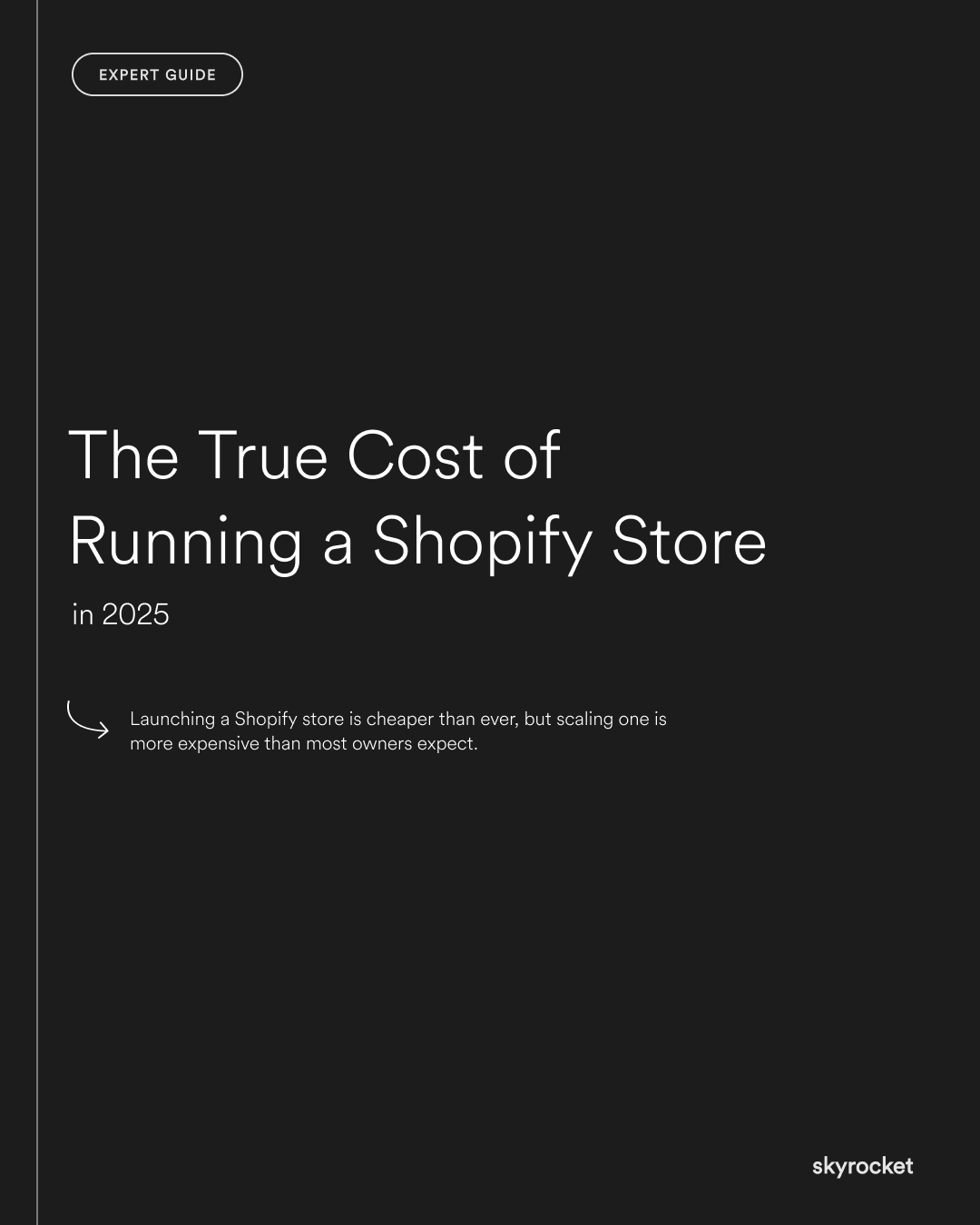Running a Shopify store is often sold as a simple, low-cost way to sell online. The platform itself is affordable to start with, and many businesses are told they can launch a store quickly without major investment. But in reality, the costs of running a Shopify store add up fast, especially in 2025 as platform fees, app subscriptions, and customer expectations increase.
The hidden costs are what catch most store owners out. You might budget for the monthly Shopify plan and transaction fees, but forget to account for design, apps, marketing, or fulfilment. Suddenly, what looked like a cost-effective channel starts eating into margins.
The true cost of Shopify is not just about money. It is about sales, growth, trust, and efficiency. If your budget planning is off, you risk wasted investment, slow sales, or poor customer experiences. This guide lays out the costs you need to factor in for 2025 so you can make smarter decisions and protect your bottom line.
Why Cost Planning Drives Growth and Profit
Getting clear on costs is not simply a finance exercise. It is a growth strategy.
- Sales: If you underinvest in design, apps, or marketing, your store will not convert. That means lower sales even if traffic is steady.
- Growth: Scaling a store requires new features and tools. Without a clear sense of costs, growth plans stall or overspend.
- Trust: Customers notice when a store looks outdated, loads slowly, or misses key features. That damages trust and loyalty.
- Efficiency: Automations and apps save staff time. Not budgeting for them means more manual work, higher labour costs, and slower service.
Understanding the real cost of Shopify in 2025 helps you set realistic targets and avoid being blindsided by fees and add-ons.
Key Tip: Launching a Shopify store is cheaper than ever, but scaling one is more expensive than most owners expect.
Anyone can pay $51 NZD for a basic plan and be online in hours. But serious growth requires investment in design, apps, marketing, and integrations. The most successful stores budget for these costs from the start rather than treating them as surprises.
The Breakdown: Real Costs of Running a Shopify Store in 2025
1. Shopify Plans
Shopify’s core subscription is the starting point. In NZD, expect:
- Basic Shopify: ~NZD $51/month
- Shopify (standard): ~NZD $132/month
- Advanced Shopify: ~NZD $517/month
- Shopify Plus: Enterprise-level, starting at ~NZD $2,700/month
Each plan unlocks features like staff accounts, reports, and transaction fees. Cheaper plans often look attractive, but higher-tier plans reduce transaction costs and add tools that save money at scale.
Tip: Do not just pick the cheapest plan. Calculate transaction fees against your expected sales volume. Sometimes paying more per month saves you thousands annually.
2. Transaction Fees
Shopify charges a percentage on each sale. In 2025, with Shopify Payments, expect:
- 2.4% to 2.9% + 30c per transaction depending on your plan.
If you use an external payment gateway, Shopify adds an extra fee of up to 2%.
Example:
- Monthly sales: $50,000
- Average transaction: $100
- Fees: 2.6% + 30c = $2.90 per sale
- Total transaction costs: ~$1,450/month
This is one of the biggest ongoing costs. Many businesses underestimate how much fees eat into margins.
3. Themes and Design
Free themes are available, but they are basic and often look generic. Most top-performing stores use a premium theme or custom design.
- Premium theme: $300–$500 one-off
- Custom design/development: $5,000–$30,000+
Strong design improves trust and conversions. Cutting corners here often costs more in lost sales than the upfront investment.
4. Apps and Plugins
Shopify’s app ecosystem is powerful, but costs add up fast. Many apps run on monthly subscriptions.
Common categories include:
- Reviews: $30–$100/month
- Subscription tools: $50–$300/month
- Upsell/cross-sell: $30–$100/month
- Inventory management: $100–$500/month
- Shipping/fulfilment: $50–$300/month
Average store spend: $200–$1,000/month on apps
These tools often pay for themselves through increased sales or efficiency, but you need to budget realistically.
5. Marketing and Advertising
No Shopify store grows without marketing. Key costs include:
- Google Ads / Meta Ads: Budget at least $2,000–$5,000/month for meaningful results.
- Email marketing tools: $50–$500/month depending on list size.
- Content creation: Photography, video, and copywriting often cost thousands upfront and ongoing.
Marketing spend varies, but most stores should expect to invest at least 10–20% of revenue into marketing.
6. Shipping and Fulfilment
Shipping costs depend on location, product size, and fulfilment model. Options include:
- Self-fulfilment: Pay postage, packaging, and labour.
- Third-party logistics (3PL): Per-order fee (often $5–$10 per package) plus storage.
Free shipping is expected by many buyers in 2025. If you absorb these costs without planning, margins can collapse.
7. Staff and Support
Even small Shopify stores need staff or contractors for:
- Customer service
- Marketing support
- Design updates
- Technical fixes
Labour is often the hidden cost no one talks about. Even if you start solo, budget for help as you grow.
Real-World Example: The Growing NZ Brand
A New Zealand apparel brand launched on Shopify Basic in 2023. By 2024, they were making $40,000/month in sales. But they struggled with manual fulfilment, no automation, and slow site speed.
Their costs ballooned:
- Apps: $800/month
- Marketing: $6,000/month
- Transaction fees: $1,200/month
- Staff: $3,000/month
They upgraded to Advanced Shopify at $517/month, invested $15,000 in a custom design, and added automations. Costs rose, but so did efficiency and sales. By 2025, they hit $100,000/month with higher margins.
The lesson: scaling requires upfront investment. Cost control is about being strategic, not cutting corners.
Common Objections
“Can’t we just tweak the basics?”
Tweaks help, but if your store is scaling, small adjustments will not cover major gaps in design, marketing, or fulfilment.
“Shopify is supposed to be cheap.”
Cheap to start does not mean cheap to grow. Treat Shopify like a business investment, not a side project.
“We will add apps as we go.”
Adding apps reactively creates messy systems and higher costs. Plan your stack early to avoid overlap and waste.
What to Do Now: A Quick Action Checklist
- Audit your current costs. Include plan, apps, marketing, and fulfilment.
- Forecast transaction fees. Base this on your growth targets.
- Review your apps. Cut unused ones and consolidate where possible.
- Set a marketing budget. Align spend with sales goals.
- Plan for upgrades. Know when moving to a higher plan or custom design will save you money long term.
The true cost of running a Shopify store in 2025 is higher than many expect, but the upside is just as big. A realistic budget helps you avoid nasty surprises, build trust with buyers, and create a store that scales smoothly.
Shopify remains one of the most powerful platforms for online selling. The businesses that succeed are those that treat it as a serious investment.
If you want help understanding where your store can improve efficiency and reduce wasted spend, you are welcome to reach out. Sometimes an external perspective makes it easier to see which costs are truly worth it.



